Reykjavik (Reykjavik) - sightseeing plan, map, attractions, accommodation, interesting facts - guide
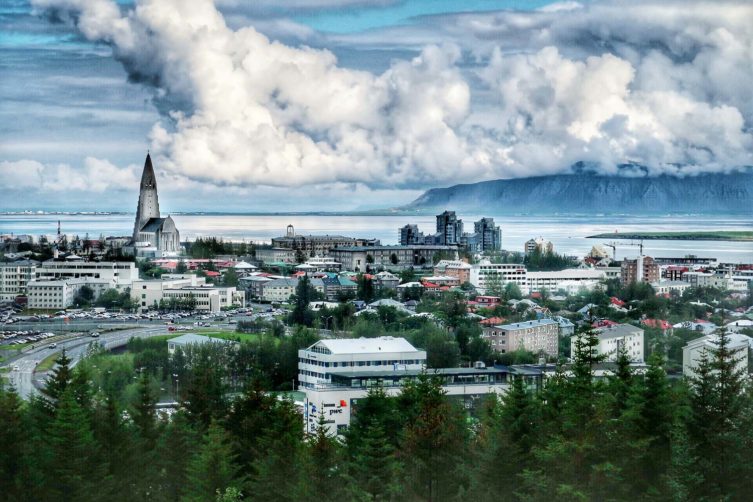
A smoking bay
It all started here. It is Reykjavik that is considered to be the first place on the island that has been settled permanently by the Vikings.
Norwegian Ingolf Arnarson he left his native lands and in in 874 came to Iceland to stay here forever. According to tradition, when he was approaching the new land, he threw into the sea the "throne posts" that were part of the so-called Viking chairs, a symbol of homestead and high status of the owner.
The Viking, respecting tradition, built its settlement where the sea threw the throne pillars ashore.
Coming ashore, he saw smoking earth. Puffs of steam rising from the geothermal springs rose high into the sky, enveloping the area… just like today. He called this place "a smoking bay"Which in his language read:"reykjavik". This is how Iceland began settlement erawhich lasted for the next .
Icelandic land has never been friendly, so Reykjavik's development has not been easy or dynamic. It is enough to mention that after over 900 years of development, in 1786 the number of inhabitants in the settlement increased to ... 167 people and Reykjavik was then given city rights 🙂
In 1799, after more than 750 years, the Icelandic parliament was moved from thingvellir to Reykjavik, the city had a population of less than 600.
In 1900, the city's population was just over 6, while Paris's population was close to 000 million.
Currently, over 220 people live in the capital region of Reykjavik. people, or about 2/3 of the total Icelandic population.
As you can imagine, you won't find any monuments in Reykjavik. The oldest surviving house in the city is just over 250 years old (it dates from 1762 and does not look extraordinary). However, Reykjavik's strength lies elsewhere. It is a cosmopolitan city of open minds, artists and art. The atmosphere of free thought is in the air.
This is where the things that have shaped modern world history happened (for example, the nuclear negotiations between US President Ronald Reagan and USSR leader Mikhail Gorbachev, heralding the end of the Cold War). This is where Bjork's music was created, which you can almost hear while walking along the streets of the city. The streets are full of a variety of creativity, discreetly filling the urban space, and even the souvenir shops seem to be somewhat more interesting.
Walking the streets of Reykjavik is a pleasure that can be sipped slowly for hours, and when you get tired, it is worth sitting in one of the many restaurants.
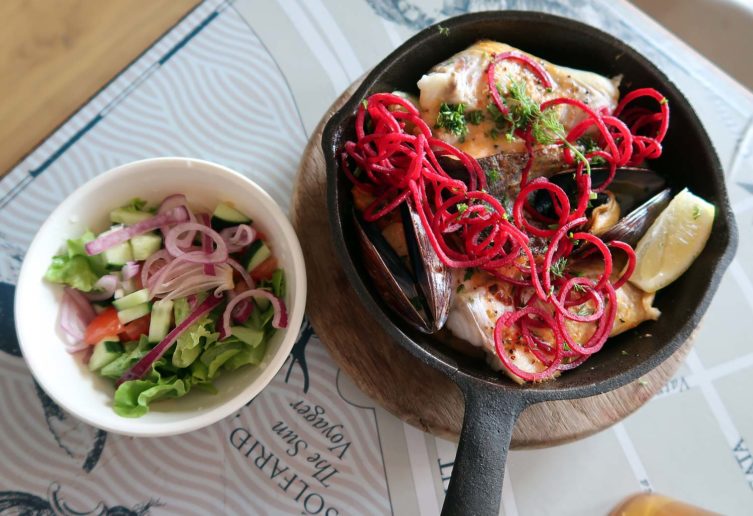
We ate in a few completely randomly selected places. We found something that delighted us everywhere. Icelanders treat food with great respect. There is no room for mediocrity here.
The island has a difficult climate for vegetation and farming anything is very demanding and expensive. Iceland imports the overwhelming majority of its food. So the food is expensive but is therefore treated with due respect. So the chefs produce very pampered culinary things. Even fast-food here is decent and fucking tasty. Don't be afraid to try everything. Traveling around the island, we ate wherever our eyes took us and we were never disappointed. Especially in Reykjavik, which is considered a city with a high level of gastronomy.
Visiting Reykjavik
Reykjavik can be a great start adventures in Icelandor a great culmination of it. You can see that the city is developing in such a way as to attract and care for tourists.
We visited it at the very end of our adventure in Iceland and thanks to the attractions in the city we filled the gaps that we were not able to meet during the tour.
Everyone who visits Iceland in the summer will have shortcomings similar to ours. What I mean? I mean attractions that you will not be able to see in summer, e.g. the northern lights (because it is bright all day), or ice caves (because in summer they are not available for sightseeing due to safety reasons).
In Reykjavik, someone thought about it and the Perlan museum was founded. Equipped with a large planetarium dome, it provides a projection of the northern lights integrated into a brilliant, awarded worldwide with awards film, telling the story of the Aurora (aurora).
As you descend into the Perlan Underground, you will visit an artificial ice cave in the middle of summer, made of original glacier ice. It is not the same as a natural cave, but it is really impressive and can be visited in the middle of summer.
You can't go around the island and see peat houses? No problem, you'll see them in Reykjavik at the open-air museum. Want to hop outside Reykjavik and see other natural wonders, but don't have a car? No problem either. There are a lot of tiny tourist offices or even independent guides who organize one-day tours in the city: The Golden Circlewhale watching blue Lagoon ... a color of your choice. Reykjavik is really well prepared.
You can read about all these possibilities in this text, but we will start by exploring the city itself.
Due to its small size, Reykjavik is easily accessible on foot. You will be able to walk around the city center and all its attractions in 2 hours. Of course, this is the same time to pass all points. In addition, you need to add the time you intend to spend inside each attraction. Someone will spend a lot of time at the museum, and someone else testing the wine list in a restaurant.
The compact size of the city and the sightseeing plan prepared by me give you the freedom to choose what you want to spend your time on. Read it, see the map I have prepared, then do what you want and enjoy the freedom of Reykjavik!
Map and itinerary for Reykjavik
Below you will find two maps. The first is a map of the city center with attractions marked on it and a proposed walking path. The walk is neither long nor demanding. The second map shows the location of attractions that are a bit distant from the tourist center of the city and which are best reached by public transport. It is neither complicated nor difficult, the more so that a brilliant facility has been prepared for tourists, allowing you to simplify everything to the absolute minimum: City Card.
Reykjavik City Card
Under the name Reykjavik City Card (The Reykjavík City Card) hides a whole package of facilities, free admission and savings.
The card has a specific expiry date and is bought with an indication of the specific days. At the moment, there are valid cards available: 24, 48 or 72 hours. Of course, it is possible to purchase in advance via the Internet and indicate a convenient day for you from which it becomes valid.
When you buy a card, you get:
- free and unlimited travel by public transport
- free admission to Reykjavik's city museums:
Arbaer Open Air Museum - open-air museum and regional museum (including peat houses)
National Gallery of Iceland
The National Museum of Iceland
Museum of Photography
Kopavogur - Natural History Museum
Hafnarhus - Reykjavik Art Museum (building 1) - contemporary art museum
Kjarvalsstadir - Reykjavik Art Museum (building 2) - incl. Kjarval painting
Asmundarsafn - Reykjavik Art Museum (building 3)
The Settlement Exhibition - Museum of Settlement
House of Culture Museum
- free cruise to the island of Videy
- free entrance to the zoo
- free entry to Reykjavik's thermal pools: Árbæjarlaug, Breiðholtslaug, Grafarvogslaug, Klébergslaug, Laugardalslaug, Sundhöll, Reykjavíkur, Vesturbæjarlaug
- discounts at restaurants, shops and selected tours
Current prices of the City Card
At the moment (2021) you have to pay for the city card:
- 4000 ISK - for a card valid for 24 hours (about PLN 130 - depending on the ISK rate)
- ISK 5600 - for a card valid for 48 hours (about PLN 180 - depending on the ISK rate)
- 6900 ISK - for a card valid for 72 hours (about PLN 225 - depending on the ISK rate)
You can check this link the current availability and prices of the Reykjavik City Card - [click]
Map and itinerary for Reykjavik city center
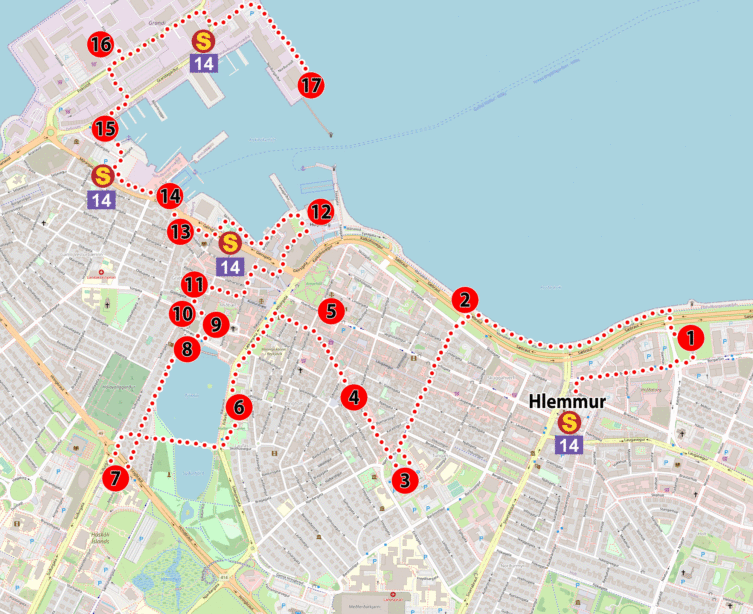
On the above map of the strict center, I have marked the most important attractions, the approximate walking path, selected bus stops (symbol with the letter "S”) And the number of the bus line under the stop symbol. As you can see, the bus number 14 passes near our route.
The numbering of attractions on the map corresponds to the numbering that you will find next to the descriptions later in the text. Each of the attractions has its own short description.
When you click on the map, its larger and more detailed version will open, which you can partially zoom in on.
I assumed that our walk begins with Hofdinear which there is a bus stop Hlemmur. In practice, it is not only a regular stop, but also the largest interchange in Reykjavik. By Hlemmur almost all bus lines in the city pass. So wherever you live, it will be easiest for you to get to Hlemmur. I thought it was a good place to start a tour and itinerary that is universal for everyone.
After you finish walking by bus 14, you can return to Hlemmur, and from there you can get pretty much anywhere, including any of the attractions away from the city center, described by me later.
Additionally, I make it available for download map of all bus lines in Reykjavik - [click] in the form of a PDF file. The map comes from the official website of public transport.
The entire walk that I am suggesting will take you about 9 km and it will take you about 2,5 hours. In addition, you have to add breaks for viewing, taking photos, and visiting museums.
The route of the walk takes place so that at the very end (i.e. when you get hungry) you will find yourself in a zone with a large selection of restaurants. If you start walking in the morning, when it's time to eat and rest, you will be where you should be, which is near the largest concentration of restaurants. Depending on what type of kitchen you prefer, stop at (11) Ingplfstrog square (versatile, varied cuisine) or at (14) port restaurants (brilliant seafood).
If you want to end your tour at lunch and go no further, there are bus stops just a few steps from the "food quarter" (marked them on the map), from where you can quickly get to the Hlemmur interchange and beyond.
1. Hofdi
A historic building where negotiations between US President Ronald Reagan and USSR leader Mikhail Gorbachev took place on October 11-12, 1986.
It was the second meeting of the presidents. The first was held in Geneva and ended in a complete fiasco. No documents were signed in Reykjavik either, but the meeting is widely considered groundbreaking. The negotiations at Hofdi allowed for some freedom of conversation, and many historians believe that informal commitments by both leaders were made here.

photo source: wikipedia
Both sides were in a rather uncomfortable position at that time.
The USSR was on the brink of bankruptcy. After years of crop failure, when farmers' crops did not give a chance to meet even the minimum needs of people, the country was extremely poor. The USSR had to copy food, paying for it with oil and gas. Much of the nation lived in poverty and starved regularly. At the same time, the USSR tried to keep pace with the United States in the arms race, expanding its nuclear arsenal at a frantic pace. The cost of expanding the arsenal was enormous. The USSR was rapidly descending into the abyss of collapse. Gorbachev knew that it would either quickly put an end to the arms race, which the Soviet Union would no longer endure, or ... the end of the communist USSR was near. In Reykjavik, he wanted to talk only about halting the arms race, and preferably about partial disarmament of both sides.
It would seem that the situation of the United States was comfortable. The enemy was barely panting, and the US economy was doing well. To make matters worse (for the USSR), the Americans made an agreement with the Arab countries, which increased oil production, leading to a huge drop in oil prices in a controlled manner. Oil - the only currency that the USSR could pay for food on the international market - was rapidly depreciating. The only "oxygen line" that kept the Soviet Union alive was quickly clogged.
The USA pushed even harder and developed the so-called the "Star Wars" program, which was a response to the Soviet armaments. As part of the program, a weapon was created that, placed in space, orbiting the earth, was to detect a possible launch of Soviet rockets and shoot them down in flight. Television all over the world showed how the defense guaranteed by the "star wars" program worked. And everything would have been great if it hadn't been… it was a bluff.
The "Star Wars" program never really existed. He was an ordinary fraud, a fictional television and propaganda production that the Americans sold to the world (and mainly to the Soviet Union), thus forcing him into an even crazier pursuit of even better weapons, even greater costs, debts and ... deeper poverty.
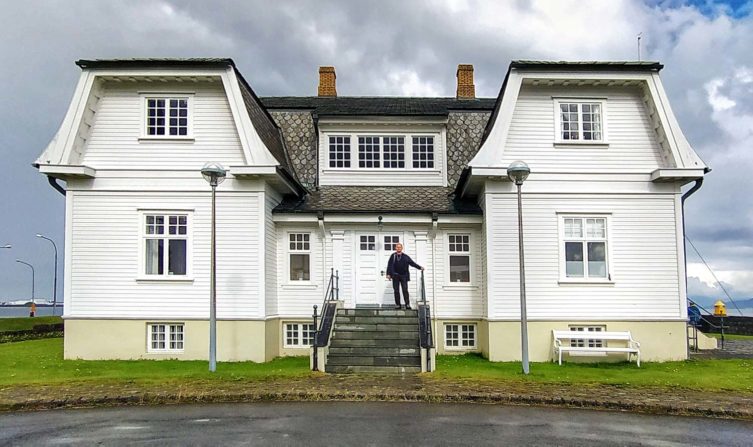
In Reykjavik, the Americans officially adopted the attitude of disinterest in disarmament, but they really wanted it almost as much as the USSR. They knew, after all, that such a gigantic deception as the fictional "star wars" program would not go on forever. The tough stance was only intended to provoke the USSR to exert even more pressure on a halt and a disarmament plan. Paradoxically, the refusal to disarm could definitely accelerate them in the next step of the negotiations.
The agreement was signed a year later (December 8, 1987) in Washington. After another 10 months, the collapse of the Soviet Union began when Estonia declared its sovereignty on November 16, 1988. Three years later, the USSR ceased to exist.
The meeting in this small house changed the course of world history.
2. Solfar sculpture
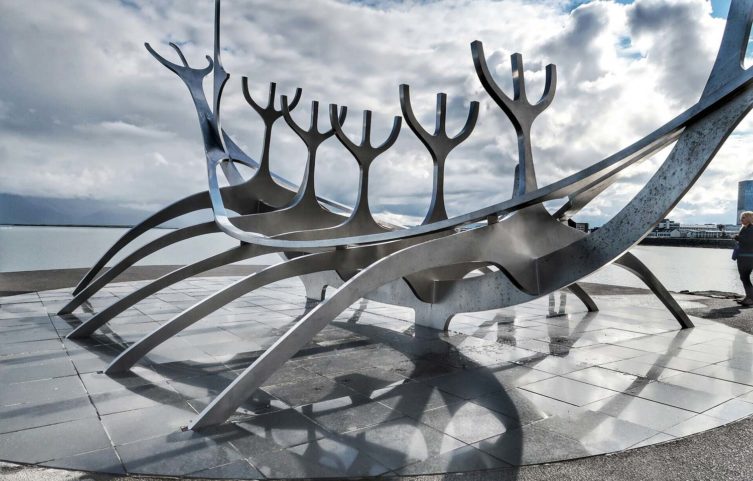
Solfar is a steel sculpture set to celebrate the 200th anniversary of the city of Reykjavík, resembling a Viking boat. Very famous and liked by both Icelanders and visitors. I admit that it makes a very nice impression and it is worth spending a few moments with it.
The author of the sculpture is Jon Gunnar Arnason.
3. Hallgrímskirkja Church
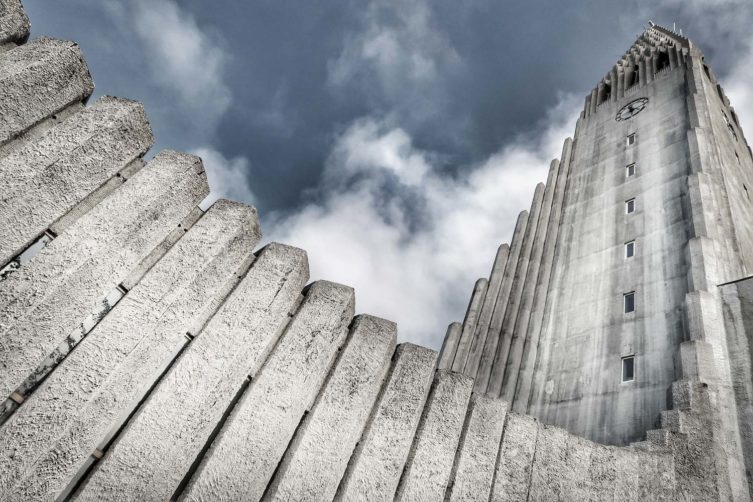
The largest and most famous church in Iceland, and at the same time the second tallest building on the island. Designed by the famous Icelandic architect Gudjon Samuelsson, often inspired by Icelandic nature.
The shape of the church is inspired by granite, hexagonal pillars (sometimes created as a result of volcanic eruptions) and glaciers characteristic of Iceland.
The church is an active temple, so it may not be open to the public during services.
4. The main pedestrian street in Skolavordustígur
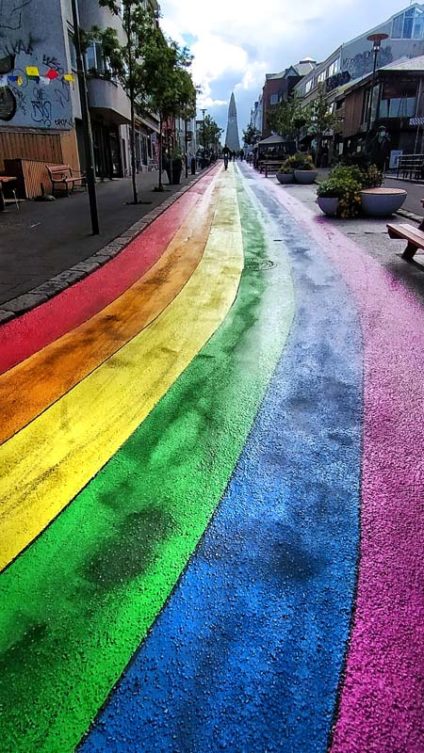
A street and a promenade leading straight from Hallgrímskirkja church towards the center and other attractions of the city. Along the promenade you will find a lot of restaurants, souvenir shops, mini museums, art shops, mini galleries ... etc.
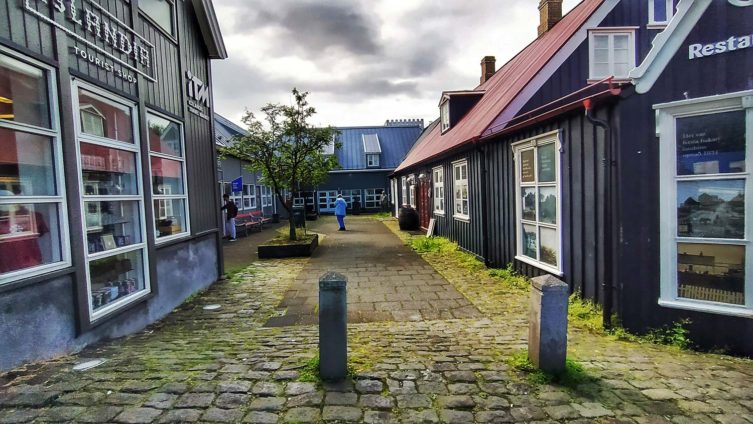
5. House of Culture Museum
The museum building, the House of Culture, was built in 1908 for the National Library and National Archives of Iceland. It is widely considered to be one of the prettiest buildings on the island. Currently, it is part of the National Gallery and exhibits the most important and significant works from the collection of the National Gallery. The exhibition is entitled "Treasures of the nation".
admission to the House of Culture Museum is free of charge Reykjavik City Card - [click]
6. The National Gallery
The National Gallery is home to the main collection of Icelandic art. The works come mainly from the XNUMXth and XNUMXth centuries. Here you will find works by all of Iceland's most important artists.
The collection now includes around 11 works, most of them works by Icelandic artists. It consists of approximately 000 paintings, 3 drawings, 800 prints, 5 sculptures, 000 books, 850 photographs, 600 new media works and 200 textile works.
admission to the National Gallery is free with Reykjavik City Card - [click]
official National Gallery website - [click]
7. The National Museum
The permanent exhibition at the National Museum presents the history of Iceland arranged chronologically. It begins with the reconstruction of the boat that the first settlers reached the coast of Iceland, and ends with a symbolic baggage check at Keflavik airport.
There are exhibits from excavations, items related to the folklore and culture of the inhabitants, items from everyday life.
The museum's collection includes over 100 exhibits and about 2 million photographs. You will see around 2 exhibits and 000 photos at the exhibition.
admission to the National Museum is free with Reykjavik City Card - [click]
official National Museum website - [click]
8. Town Hall
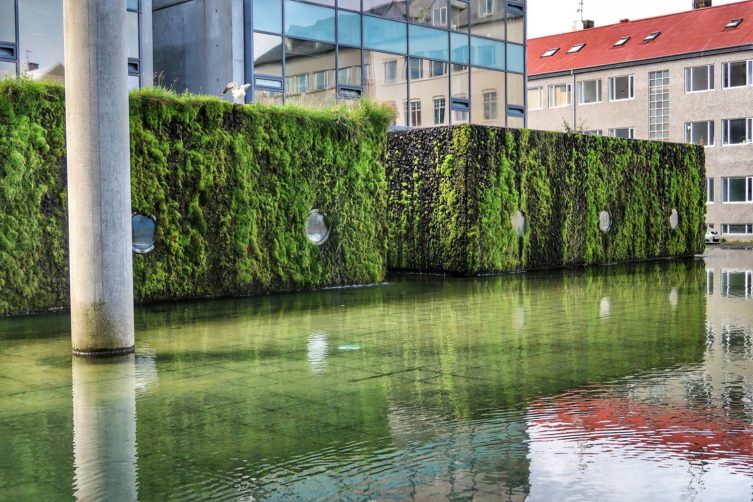
Reykjavik City Hall is housed in a postmodern building made of concrete, glass and… lava. It is located directly on Lake Tjornin.
The building has a huge, extremely precise, three-dimensional map of the island and an area of over 76 m2. The technique in which the map is made was very laborious and consisted of sticking successive layers of thin paper of the appropriate shape on top of each other.
official Town Hall website - [click]
9. Icelandic Parliament - Althing
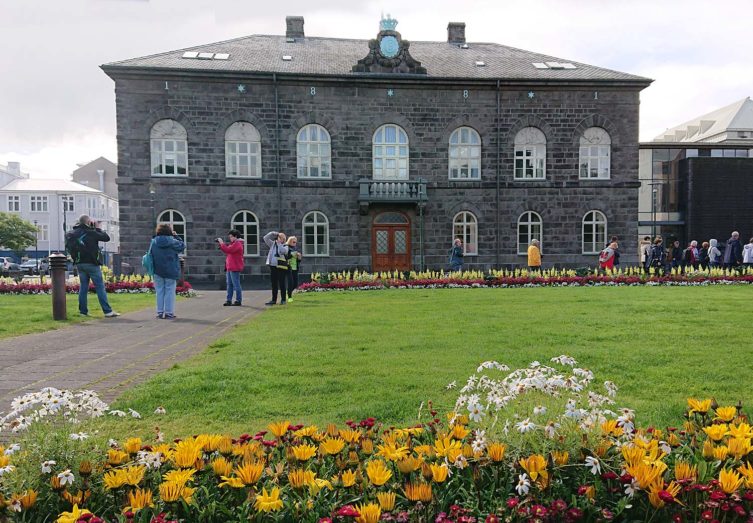
The building where the Icelandic Parliament sits, the Althing, was built in 1881 and you may be familiar with it from television, as most of the civil protests take place beneath it. So it is always a natural background for all protests 🙂
Today, the Icelandic parliament consists of 63 deputies, and elections are held every four years.
official Althing's website - [click]
10. Museum of Settlement
At the Settlement Museum, you will learn about the life of the first settlers on the island. The centerpiece of the exhibition are the remains of one of the oldest (before 871) man-made buildings in Iceland. They were found during excavations carried out in 2001. Complementary are items from the Viking era.
admission to the Settlement Museum is free with Reykjavik City Card - [click]
more information and photos from the exhibition can be found on the museum's website - [click]
11. The oldest building in Reykjavik
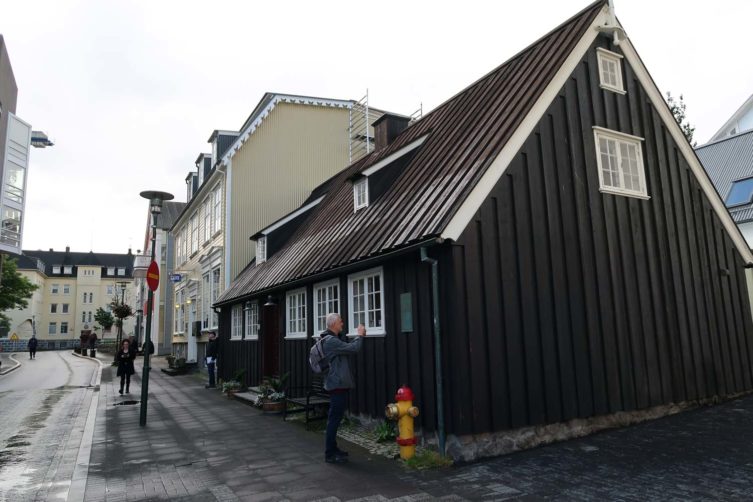
The oldest building in town is located at 10 Aðalstræti Street. At first glance, it does not make a great impression. Just an ordinary, black, wooden house with white windows. Returning to history, however, it is worth noting that it was established in 1762, when Reykjavik was still a small village. At that time, less than 160 people lived here. From this perspective, the fact that the building is still standing in the same place, in the very center of the city, is impressive.
11. Ingólfstorg Square
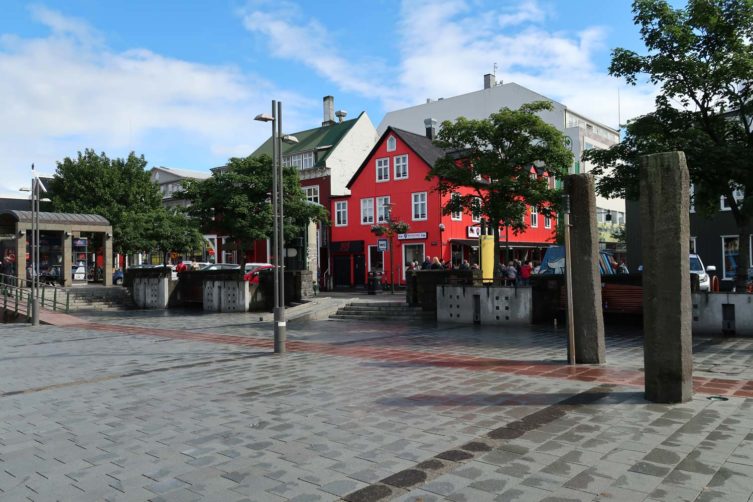
It's fair to say that Ingólfstorg is the main, albeit small and intimate public square in the center of Reykjavik. It is often used for parties and public events. Inevitably, there are plenty of restaurants, bars and cafes in its vicinity. A great place to eat, drink and rest well (but not necessarily cheaply).
For some time now, the square has been decorated with countless lights at Christmas.
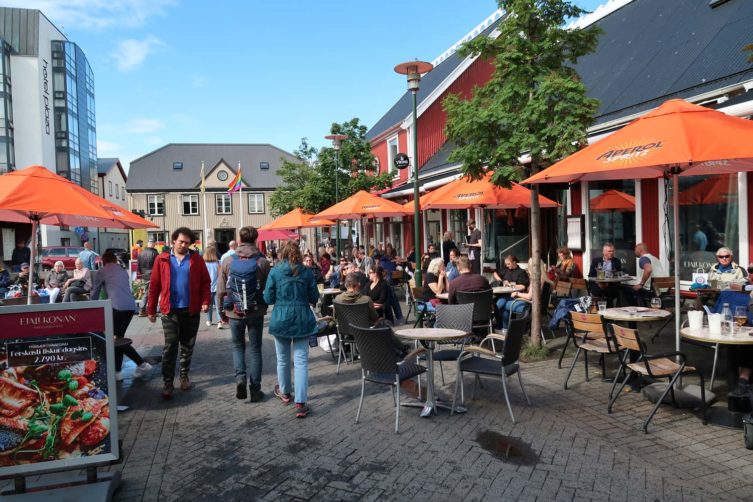
12. Harpa
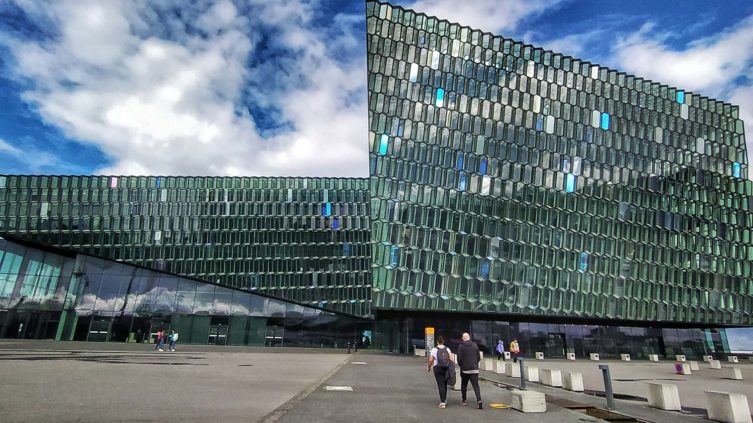
One of the most interesting buildings in Iceland, and at the same time a perfect example of modern architecture with flair. Inspired by nature, and more precisely hexagonal basalt columns, with a glass facade in the form of colored polygons, it looks great especially in sunny weather.
The building houses a conference center and a concert hall. During the opening hours, Harpa can be visited and even should be visited. It also looks great from the inside.
13. Hafnarhus - museum of contemporary art
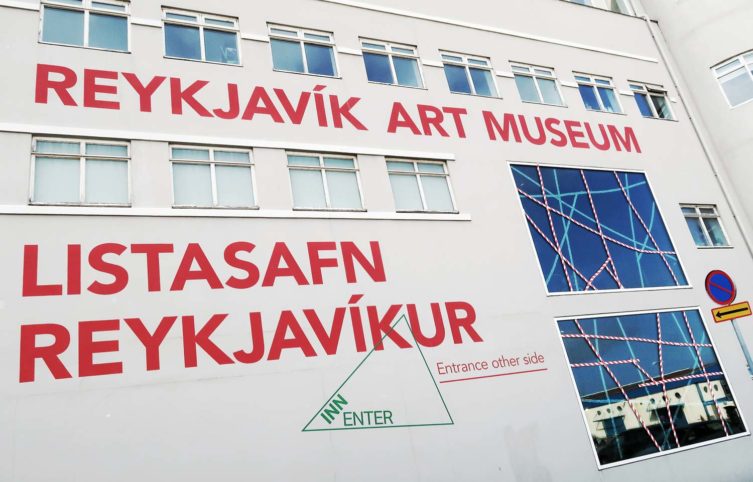
If you like contemporary art, you can't miss this museum. If, on the contrary, you do not like contemporary art, then in Hafnarhus you might like it. The museum is not overloaded, and the exhibitions are selected in such a way that it is difficult to get bored here. The nature of the exhibitions and the way they are displayed discreetly draw you deeper and deeper. Before you know it, after about an hour you are at the end of the exhibition and you think that you would like to see something else.
admission to Hafnarhus is free from Reykjavik City Card - [click]
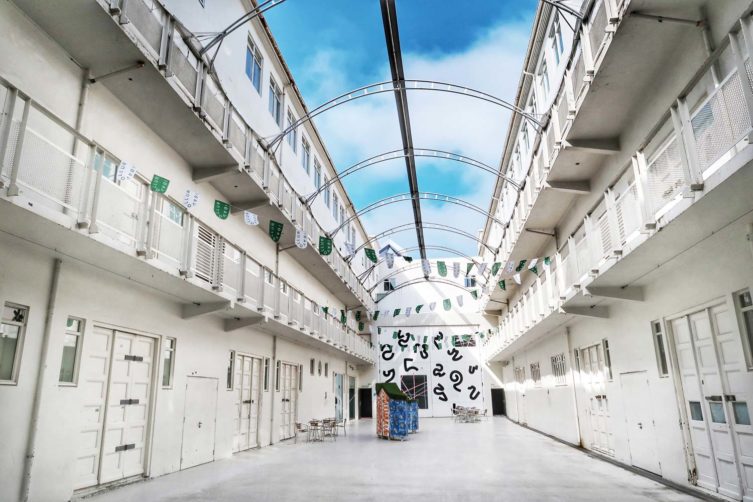
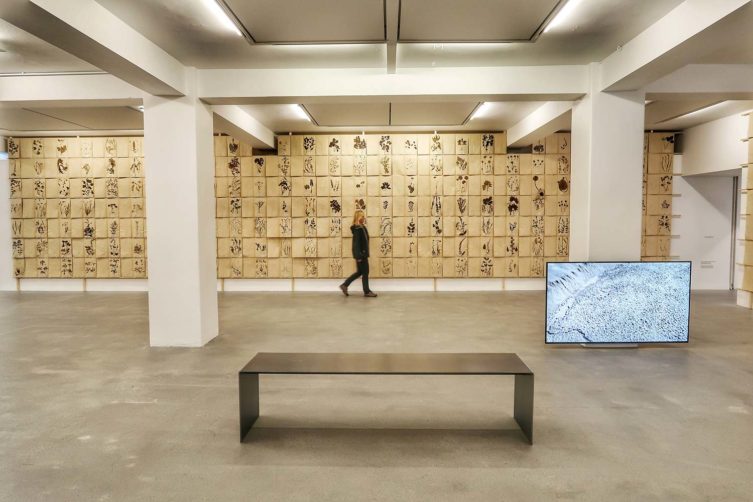
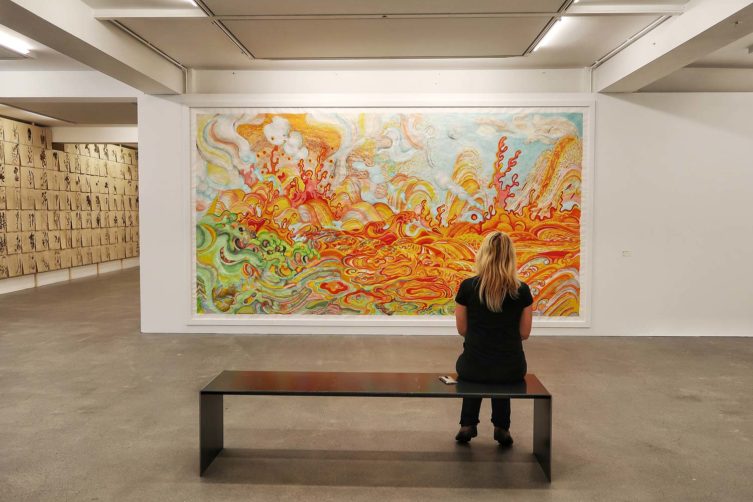
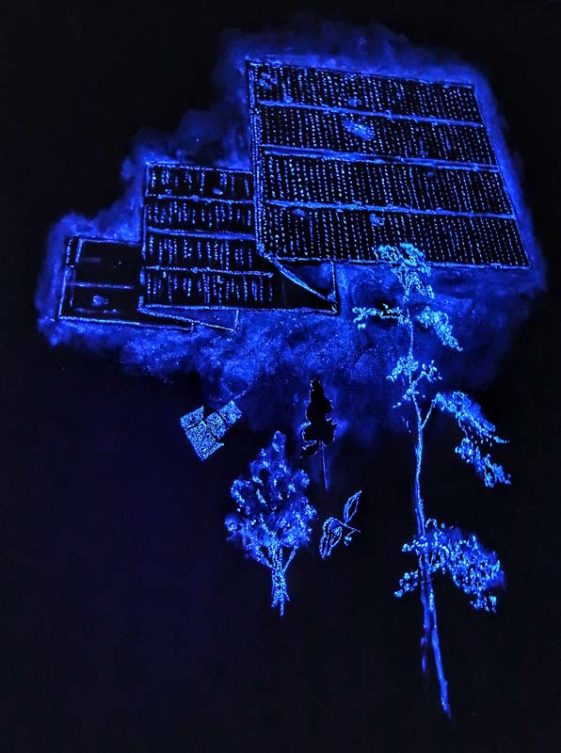
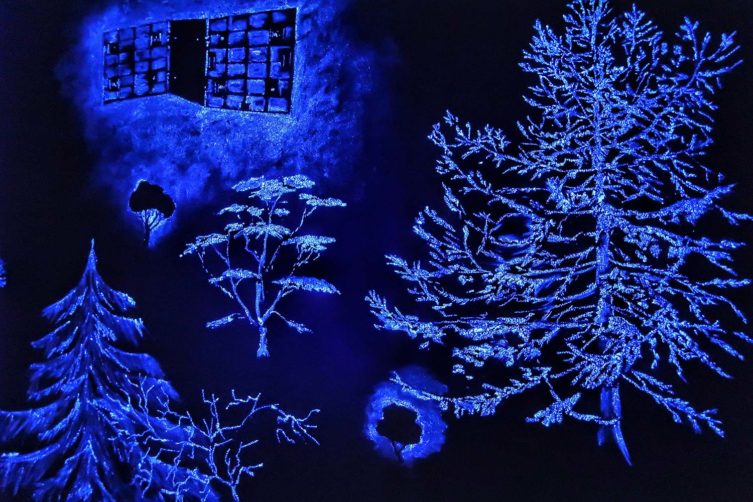
14. Harbor bars and restaurants
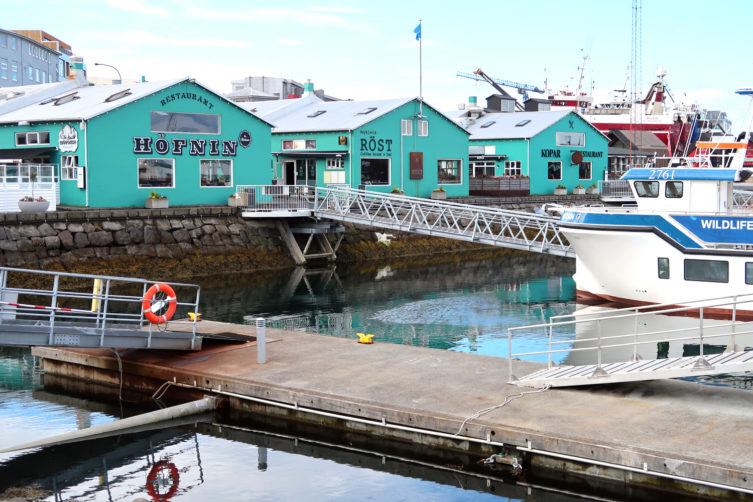
There are barracks in the color… er… right next to the harbor quay. here I had to ask my wife: what color is it? Guys aren't that strong at that, so I preferred to ask an expert.
Well, turquoise! Said the wife. They will. There are turquoise barracks.
If you are looking for a place where you can eat the best seafood, this is the right address. Several restaurants are located in the barracks, serving insane seafood. Excellent food from crystalline, cold waters, combined with the skill of the chefs, give a perfect result. It's not cheap, but it's worth it.
15. The Maritime Museum
As you can guess, all the exhibitions in the museum are related to the sea. There are three permanent exhibitions: "History of Sailing", "From Poverty to Abundance" and "The Coast Guard Ship Odinn" (a ship that has been turned into a museum and has been patrolling the coast of Iceland since 1959).
official Maritime Museum website - [click]
16. Whale Exhibition
In the museum, you can see more than 20 models of whales and killer whales. The models are powerful, full-size and make a really great impression. One of the exhibits is a real, 25-meter-long blue whale skeleton (a dead female was washed ashore in 2021).
17. Thufa
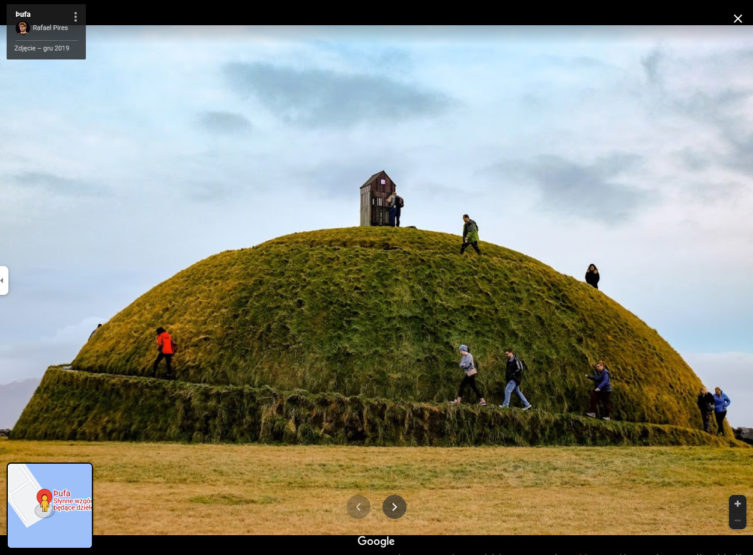
photo: Rafael Pires
In short, Thufa is a large, grassy mound at the end of the harbor wharf, designed by Icelandic artist Ólöf Nordal. There is an old wooden fish drying room at the top of the mound. Such structures were once commonly used to dry fish in the wind.
A narrow, spiral walking path leads to the top of Thufa, winding around the mound.
According to the author of Thuf, it is a place of meditation and peace.
Map of attractions outside the city center
There are some really interesting attractions outside of Reykjavik city center. I marked them on the map below.
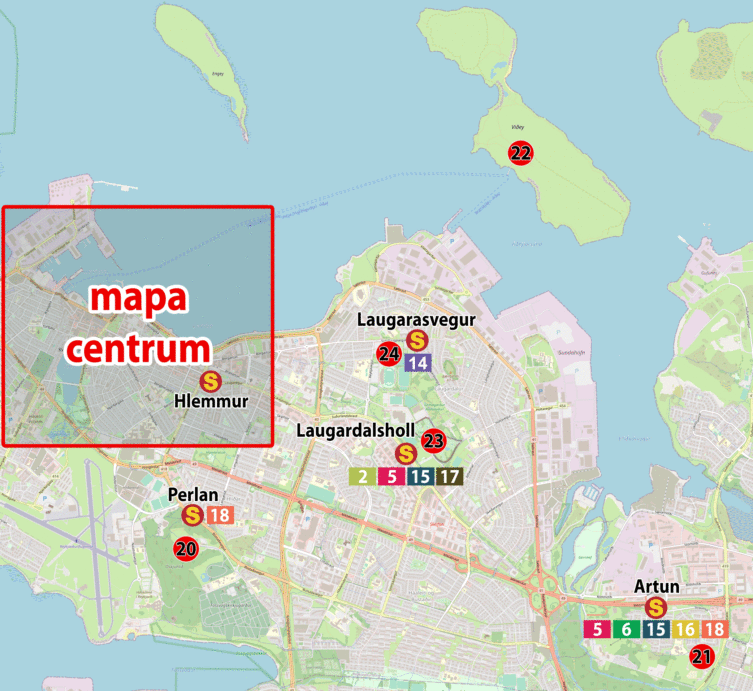
For better orientation, on the map of attractions distant from the city center, I have marked the area of the very center. This area was covered by the first map. Please note that I have marked only one point in the city center: Hlemmur bus stop.
From Hlemmur, you can take a bus to all attractions outside of the city center. You don't need to look for other stops or transfers.
For each attraction, I marked the nearest bus stop, gave the name of the stop and the colored numbers of the bus lines that you can get here from the Hlemmur stop.
I guess it saved you a lot of work 🙂
20. Pearl
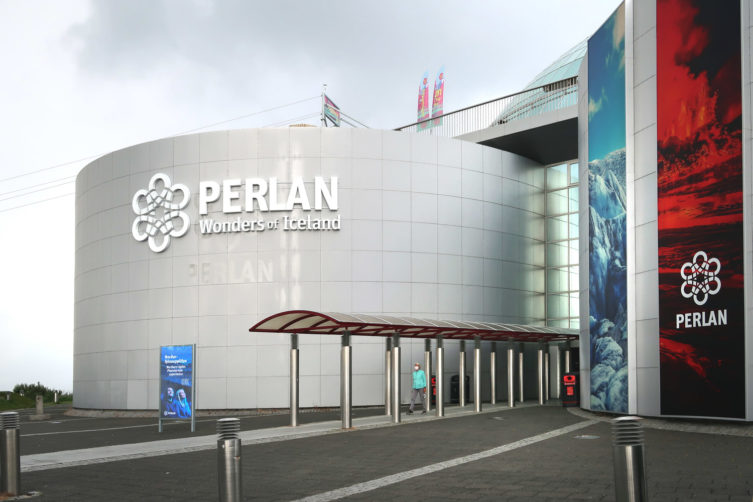
For most visitors to Iceland, the Perlan museum should be a must-see. Why?
By far the biggest tourist traffic in Iceland is during the summer. Therefore, most of the arrivals do not have a chance to see the northern lights (because it is bright all day) and it is not possible to enter the ice caves (because for safety reasons it is not possible to enter them in summer). Perlan perfectly complements these deficiencies.
Perlan Ice Cave
In Perlan there is an ice cave, open all year round, made of glacier ice. It is over 100 meters long and has a constant temperature of -10 degrees Celsius or even cooler. You will spend about 15 - 20 minutes inside. So let's dress well.
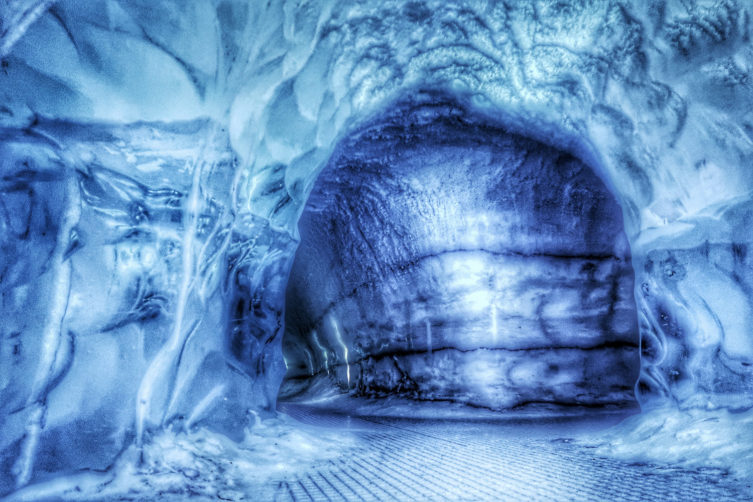
The cave has several corridors. From large, voluminous and wide to small, narrow, low and tight. If you want to, you can squeeze through a few narrow ice passages, but if you don't feel like it, you can walk through the cave through a wide corridor.
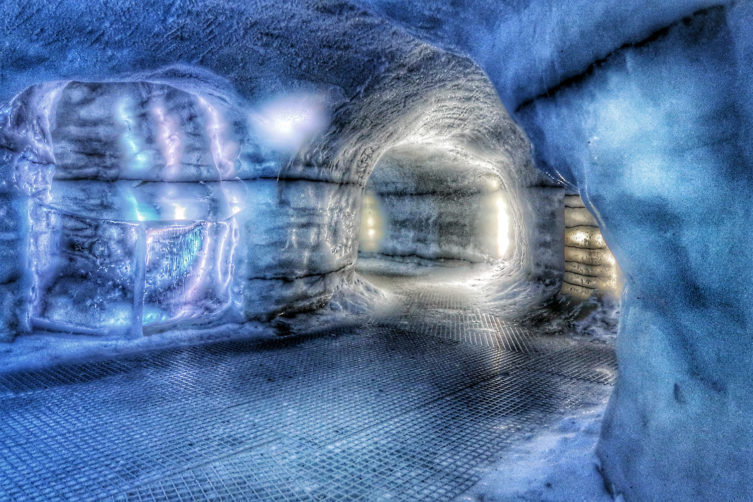
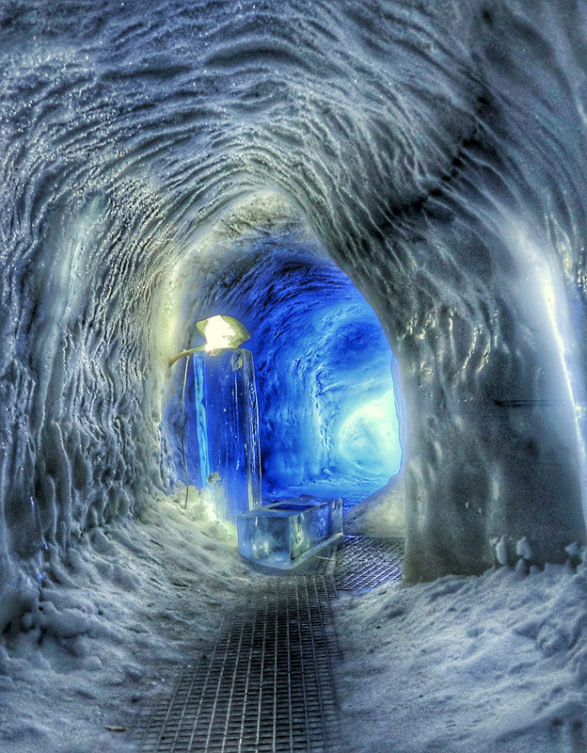
The interior of the cave is illuminated. Thin layers of volcanic ash are beautifully visible on the walls. They are formed during volcanic eruptions. The ash after the eruption settles on the surface of the glacier, and then it is covered with successive layers of snow, which over time turns into ice. So a layer of ice slowly forms and builds up until the next eruption as another thin layer of dust forms… and the cycle repeats itself.
The cross-section of the ice in a glacier looks like a specific zebra. In Perlan you can see it up close.
The installation is also interesting, where thanks to the mirror images you can see deep into the ice crevice. An ice throne awaits you at the end of your tour. Made of beautiful, crystal clear ice, so transparent that ... you can hardly see it in the picture.
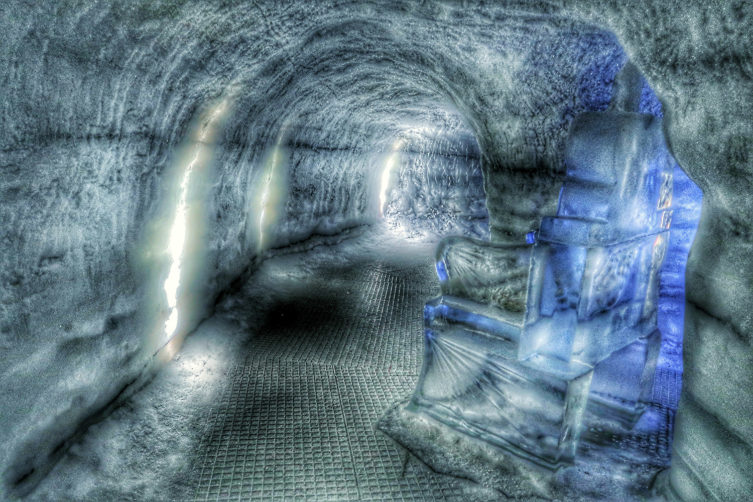
Aurora projection in Perlan
The Perlan Museum houses a full-size planetarium. A large semicircular dome is used to project the northern lights. You sit down in a comfortable armchair, raise your head, and the spectacular aurora rises above you. In addition to the Northern Lights itself, a multimedia animation is displayed during the screening, telling the story of Aurora (i.e. aurora) and explaining the mechanics of its formation.
The projection is really insane. The animations are at the highest level and made with flair. So it's no surprise that it has been showered with many awards around the world.
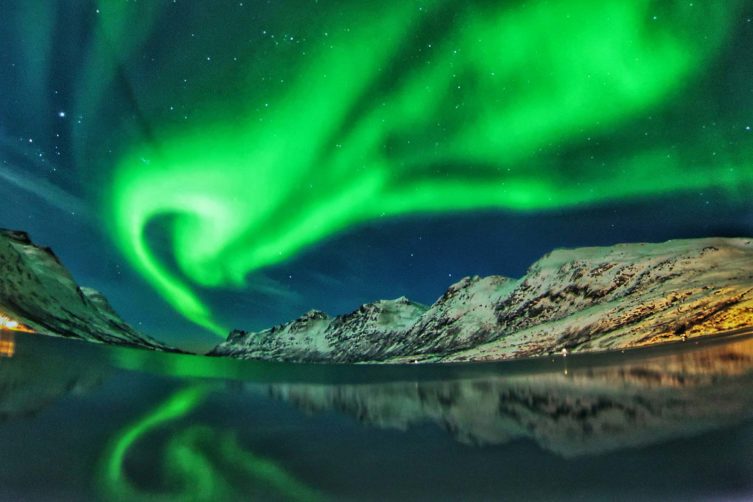
Tickets to Perlan
The most profitable option is to buy a combined ticket for all attractions (it is called "Iceland Wonder Tour"), that is: to the ice cave, on the aurora projection (Aurora) in the planetarium and on accompanying exhibitions and an observation deck on the top floor of the building. Buying tickets separately for even two attractions is more expensive than a combined ticket containing everything.
You can buy a ticket directly at the museum's ticket office at the entrance or online in advance. Due to the fact that entry to the screening at the planetarium is possible only at certain times, it may occur that when you buy a ticket at the ticket office, there will be no more seats for the next hours and you will have to wait a long time for the next free screening.
So I suggest you buy a ticket online. You can then choose a time that suits you in advance and come directly to the venue for the projection. After the projection, you will easily see the ice cave, then the rest of the exhibition and finally the observation deck.
Check price and availability of tickets to Perlan - [click]
21. Arbaer Open Air Museum
The Arbaer Open-Air Museum is mainly intended for people who are not going deep into Iceland to Glaumbaer. In the museum, you can see the former residential buildings of Iceland and a characteristic peat house. The open-air museum is a living open-air museum (with farm animals). In summer, you can even meet "locals" in traditional costumes.
The attraction is particularly well received by children who have a great time here.
The schedule of buildings and attractions can be found on the special a map prepared by the museum - [click]
admission to the Arbaer Open Air Museum is free with Reykjavik City Card - [click]
Official Arbaer museum website - [click]
22. Videy Island
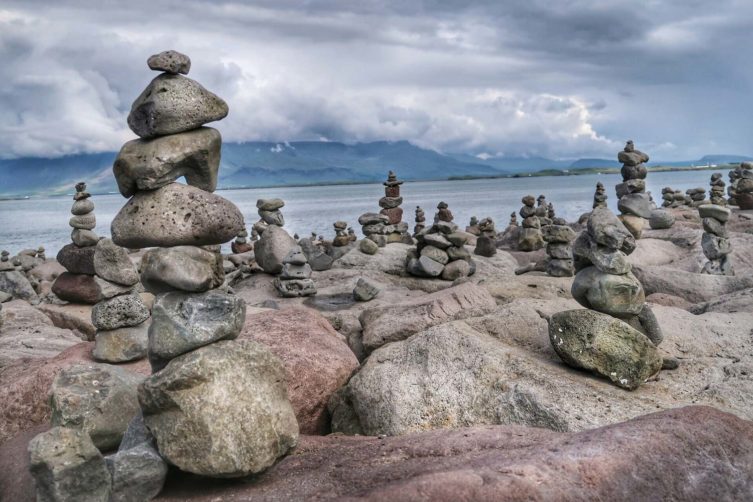
Videy Island has become home to the man who made the greatest impact on Reykjavik's development: Skuli Magnusson. Thanks to him, Reykjavik turned from a small village into a thriving and constantly developing city. He built his residence on the island of Videy, part of which is still standing here today, and right next to it is a church, where he was buried 20 years later ... under the altar.
There is also an installation on the island by Yoko Ono, John Lennon's wife.
The installation has the shape of a large pipe, 4 meters in diameter, with an opening facing upwards, from which it emits light into the cosmos, symbolizing the "fountain of wishes".
Imagine Peace Tower - because this is the name of this installation - it was created in honor of John Lennon, and on its walls there are the words "Imagine" in 24 languages.
You can get to Videy by ferry. Ferries run all year round. If you have Reykjavik City Card - [click], you have a cruise on Videy for free.
In summer (from May 15 to September 30), ferries depart from three places:
- Skarfabakki - Videy:
on Videy: 10:15, 11:15, 12:15, 13:15, 14:15, 15:15, 16:15, 17:15
return: 11:13, 12:30; 13:30 p.m., 14:30 p.m., 15:30 p.m., 16:30 p.m., 17:30 p.m., 18:30 p.m.
- Old port - Videy:
on Videy: 11:50, 14:50
return: 11:30, 14:30, 17:30
- Harpa - Videy:
on Videy: 12:00, 15:00
return: 11:30, 14:30, 17:30
In winter, the ferry runs only on Saturday and Sunday and only from one place:
- Skarfabakki - Videy:
on Videy: 13:15 pm, 14:15 pm, 15:15 pm
return: 14:30, 15:30, 16:30
official Videy Island website - [click]
23. Reykjavik Zoo
Reykjavik Zoo is not that big. It is basically a small zoo and family park. Here you will see all Icelandic farm animals as well as reindeer, harbor seals and arctic foxes. In the recreational and park part there is a carousel, train, boats on the water, segways, as well as family barbecues and places to rest.
admission to the zoo is free with Reykjavik City Card - [click]
24. Laugardalslaug swimming pool
All Reykjavik's thermal pools are impossible to visit, so I chose the one that I find most interesting. The complex consists of an indoor Olympic pool, a 50m outdoor pool, a 400m2 recreational pool, 8 small thermal pools with different water temperatures and a 17m2 thermal bath.
admission to the Laugardalslaug Pool and seven other pools is free with Reykjavik City Card - [click]
Reykjavik online webcam
For those who like to see with their own eyes what is happening on the spot, I provide a live camera image from Reykjavik, overlooking the Hallgrimskirkja church.
The view below automatically updates every few minutes, while clicking on the picture will take you from this page to the website of the broadcast provider and there you will be able to see the moving image from the camera.

Reykjavik weather for 7 days
The weather information is updated automatically. So whenever you come back, they will be up to date.
Access from Keflavik airport to Reykjavik
Keflavik Airport is approximately 50 km from the center of Reykjavik. So it is obvious that the capital of Iceland has several permanent connections with the airport.
The easiest way is when you rent a car at the Keflavik airport. Then, after landing, you pick up the car and it's over. You go wherever you want.
However, if you don't have plans to rent a car, you have the following options: regular public or private bus connections, or taxis.
Public transport
You will drive from Keflavik airport to Reykjavik line 55. The bus leaves approximately every hour on weekdays (less frequently on weekends and holidays), but some journeys end in Fjordur and then you have to change to line number 1.
Ticket prices:
1880 ISK - adults
ISK 660 - youth 12-17 years old
ISK 284 - children 6-11 years old
On the carrier's website you can check current timetable for bus line 55 - [click]
Private bus lines
Fortunately, apart from the public line, there are also private lines. They cost about twice as much, but they have a departure schedule that is based on arrival times and run seven days a week.
The route is served by the following lines: Airport Direct, Flybus and Gray line. They all have stops near the airport's main terminal.
You can buy tickets in advance online on carriers' websites or on a one-stop booking site offers of several carriers - [clicks]
Taxi
By far the most expensive and ambush option due to the price gap. There are cases when tourists pay up to PLN 900 for a ride. Iceland is expensive… but not that.
Before getting into the taxi, ask for the cost. Set a stake and just get in. The taxi driver has been driving this route every day for years and knows perfectly well how much it will cost to travel to a certain point in the city. If there is a problem with determining the amount of the trip, it is a clear signal that there may be an unpleasant surprise. Don't get on. Look for another taxi.
The normal price for an airport taxi to the city center is:
- for a journey from 1 to 4 people: approximately ISK 16
- for a journey from 5 to 8 people: approximately ISK 21
Trips from Reykjavik to other parts of Iceland
If you do not intend to rent a car, and you still want to see a piece of Iceland, you can do so by taking advantage of the offers of local guides.
It is difficult for me to point to a specific one, they recommend an attraction… well, maybe The Golden Circle. It is the most popular and at the same time very interesting. And what else? It all depends on individual preferences and the size of the wallet.
I think it's worth just looking at the current tour offer from private guides and travel agencies. For your convenience, I have prepared a special link to the database of offers gathering various offices and various guides in one place.
Check it out: current offer of trips from Reykjavik - [click]
At the time of writing, there were over 280 different offers under the link I provided. Everyone will find something for himself.
Car Rentals in Iceland
A very broad and important topic. It is impossible to describe it well in a few words, so I have prepared a separate and very solid post on this topic. I think this is one of those must-read entries. I put a lot of work into it and it will be difficult for you to find anything more specific on the internet.
I recommend: Iceland - car rental without credit card and deposit?
Reykjavik accommodation and hotels
The hotel base in Reykjavik gives you a lot of freedom of choice. The rest of the island is not so colorful anymore. Sometimes you will simply be forced to spend the night in one specific place, because there will be no choice.
Current prices and available seats can be found at this link: accommodation in Reykjavik - [click]
I have prepared the link in such a way that it limits the search results to the Reykjavik area only and eliminates other, unnecessary offers.
Below you will find a few specific, selected by me proposals that may interest you, or will be a good starting point for your own search. As you can see, you can find affordable and attractive accommodation offers, but you have to start looking well in advance.
Guesthouse Galtafell - [click]
R13 - A Townhouse Hotel - [click]
Iceland Comfort Apartments - [click]
Iceland sightseeing itinerary
The entry you are reading is an element prepared by me Iceland sightseeing plan. Most likely, everything you need to prepare for your trip to Iceland can be found in this entry. Weather, accommodation, car rentals, tourist attractions and a map of a trip around Iceland ... all in one place: Iceland - map and sightseeing plan, tourist attractions, excursions, the most beautiful places - [click]. Be sure to read!Important to me!
Give the article a good rating (5 stars welcome 😀)!It's free, a for me it is very important! The blog lives on visits and thus has a chance to develop. Please do it and ... thank you in advance!
If you like my guides, you will certainly find the one I created useful guide catalog - [click]. There you will find ready-made ideas for your next trips, descriptions of other tourist destinations and an alphabetical list of guides divided into countries, cities, islands and geographical regions.
I also post link to Facebook profile - [click]. Come in and press "Follow"then you will not miss new, inspiring posts.
Unless you prefer Instagram. I'm not a social media demon, but you can always count on something nice to look at on my instagram profile - [click]. The profile will gladly accept any follower who likes it.
I make the content I create available free of charge with copyright, and the blog survives from advertising and affiliate cooperation. So, automatic ads will be displayed in the content of the articles, and some links are affiliate links. This has no effect on the final price of the service or product, but I may earn a commission for displaying ads or following certain links. I only recommend services and products that I find good and helpful. Since the beginning of the blog's existence, I have not published any sponsored article.
Some of the readers who found the information here very helpful, sometimes ask me how you can support the blog? I do not run fundraisers or support programs (type: patronite, zrzutka or "buy coffee"). The best way is to use links. It costs you nothing, and support for the blog is self-generating.
Pozdrawiam


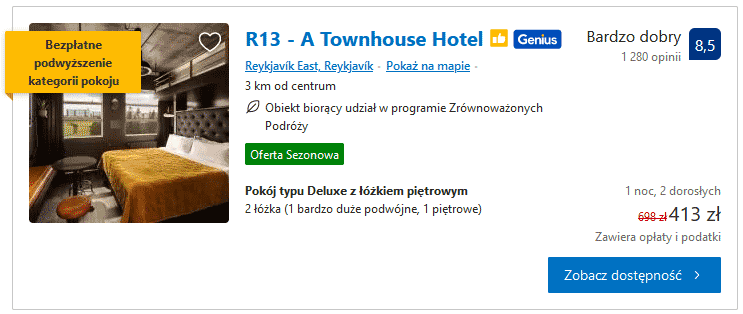
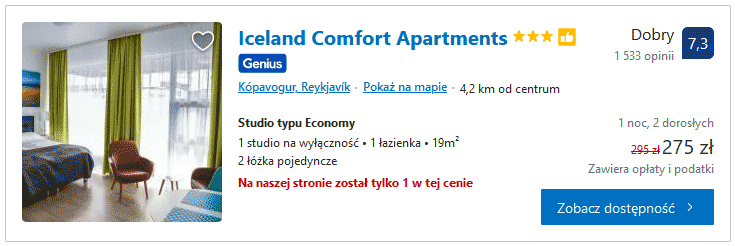
Cool. I have never come across such a fantastically designed guide in my life. I already want to go there and see all these gems…. according to the travel map :) :) :): best regards Ewa
Book good weather! Have a great journey!
Thank you!
This is the first time I meet such a professional approach to the subject. The amount of work you have done is shocking. Thank you again. Submit an account you deserve credit.